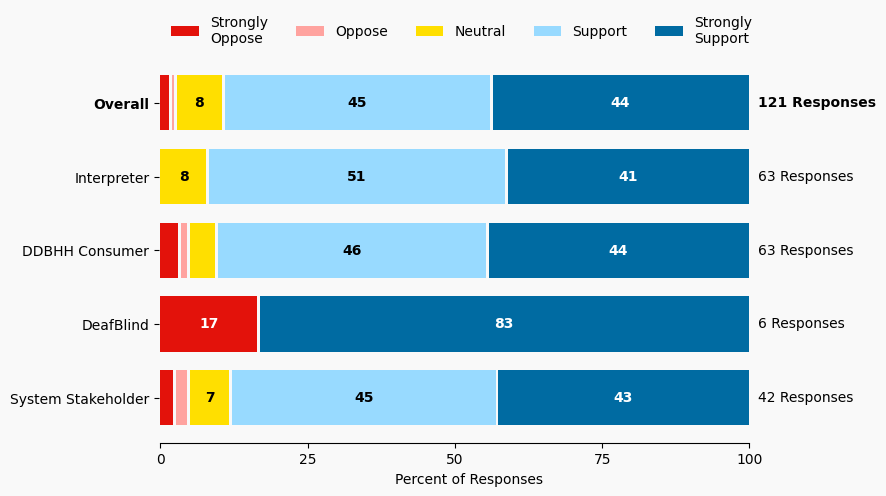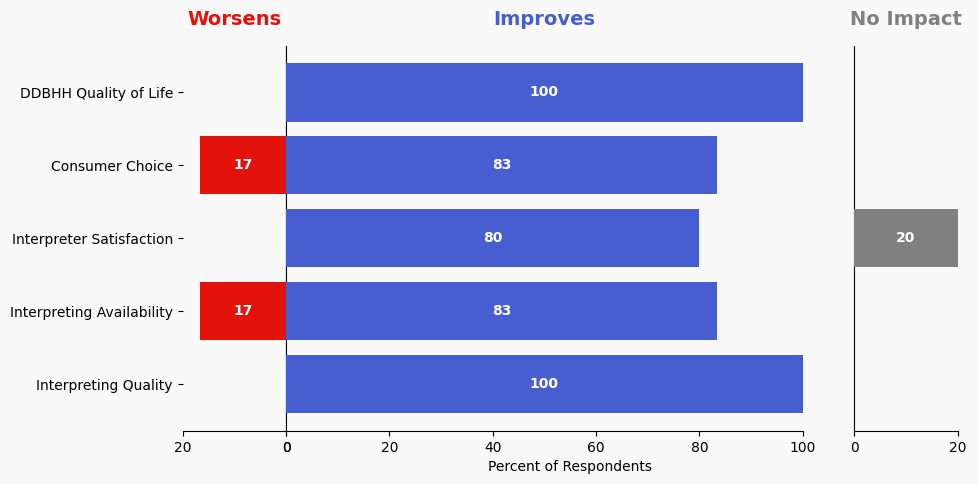48 Provide ProTactile and Communication Intensive Trainings for DeafBlind Minnesotans
Issue: Many DeafBlind individuals do not always have exposure to ProTactile. Often interpreters have greater access to training than DeafBlind Minnesotans. Some DeafBlind consumers may not always know what communication works best for them if they haven’t had exposure, nor do they have training on how to instruct interpreters to work with them best. Often, interpreters walk into assignments with DeafBlind individuals not knowing what communication works best for them, resulting in frustration and potentially failed communication on both sides.
Proposed Solution: Commission, State Services for the Blind and Minnesota DeafBlind Association collaborate to provide Communication, ProTactile and Self-Advocacy training opportunities for DeafBlind community members. After DeafBlind consumers have this training, they are better able to collaborate and guide interpreters on what works best for them as DeafBlind consumers.
Expected outcome: DeafBlind individuals can choose whether or not to incorporate ProTactile and/or other modes of communication. DeafBlind consumers guide interpreters on how best to communicate with them. Interpreters work with DeafBlind consumers who are better able to articulate their communication needs to interpreters.
Who is impacted: DeafBlind consumers
Timeline: 6 months

Summary of Support Image Description
The stacked bar charts show how respondents rated their level of support and the total number of responses. The percentage for the five support levels is shown from left to right: Strongly Oppose (Dark Red), Oppose (Light Red), Neutral (Yellow), Support (Light Blue), and Strongly Support (Dark Blue).
Respondents may identify with multiple subgroups. The overall level of support is:
Overall
Strongly Oppose: 2%
Oppose: 1%
Neutral: 8%
Support: 45%
Strongly Support: 44%
Click to see the detailed image description for each subgroup.
Interpreter
Strongly Oppose: 0%
Oppose: 0%
Neutral: 8%
Support: 51%
Strongly Support: 41%
DeafBlind
Strongly Oppose: 17%
Oppose: 0%
Neutral: 0%
Support: 0%
Strongly Support: 83%
DDBHH Consumer
Strongly Oppose: 3%
Oppose: 2%
Neutral: 5%
Support: 46%
Strongly Support: 44%
System Stakeholder
Strongly Oppose: 2%
Oppose: 2%
Neutral: 7%
Support: 45%
Strongly Support: 43%
Overview of Respondents Opting for In-Depth Solution Analysis
After indicating their support level, 4% of the 121 respondents opted in to further assess whether the solution would worsen or improve on five metrics. Of the opt-in reviewers (5 respondents), 100% supported the solution, 0% were neutral on the solution, and 0% opposed the solution.
The remaining 116 respondents did not opt in to further assess the solution. Of these people, 88% support the solution, 8% were neutral on the solution, and 2% opposed the solution.
Reviewer Evaluation of Solution Effectiveness

Solution Effectiveness Image Description
The stacked bar charts show how respondents assessed the effectiveness of this solution based on five metrics. For each metric, the percentage of respondents is shown from left to right: Worsens (Red), Improves (Blue), No Impact (Gray).
DDBHH Quality of Life
Makes It Worse 0%
Makes It Better 100%
No Impact 0%
Interpreter Satisfaction
Makes It Worse 0%
Makes It Better 80%
No Impact 20%
Consumer Choice
Makes It Worse 16%
Makes It Better 83%
No Impact 0%
Interpreting Availability
Makes It Worse 16%
Makes It Better 83%
No Impact 0%
Interpreting Quality
Makes It Worse 0%
Makes It Better 100%
No Impact 0%
Reviewer Feedback and Insights
Interpreter
Comments from Interpreters note that SSB (State Services for the Blind) operates similarly to VRS (Vocational Rehabilitation Services) and functions as an employer agency.
Deaf, DeafBlind, Hard of Hearing
Comments from DeafBlind consumers indicate that this solution has significant potential and emphasize the need for such a program to offer ProTactile and co-navigation, not just environmental feedback.
System Stakeholder
No comments were submitted.
PREVIOUS SOLUTION
Issue: There are insufficient best practices regularly used for CDI and CHI team settings
NEXT SOLUTION
49 Conduct a DeafBlind Minnesotans Study
Issue: More information is needed about the quality of life for DeafBlind Minnesotans
Leave a Reply